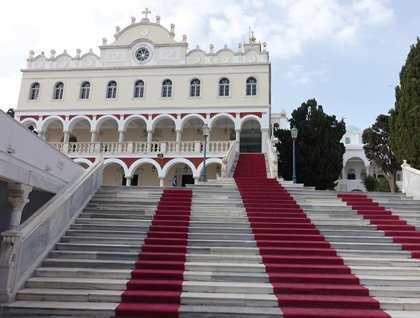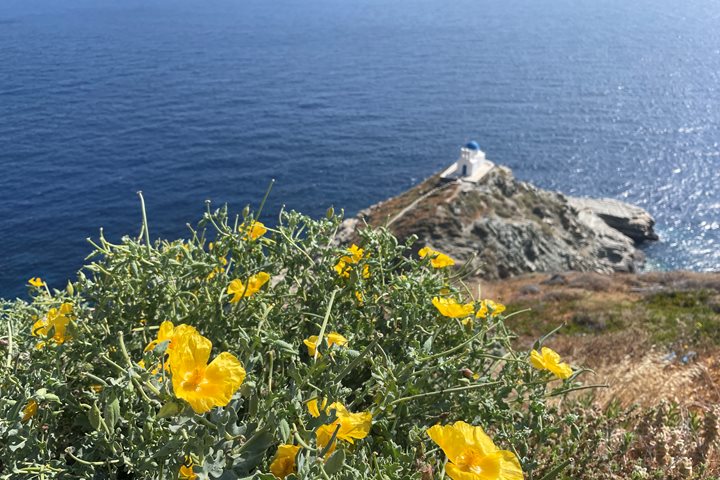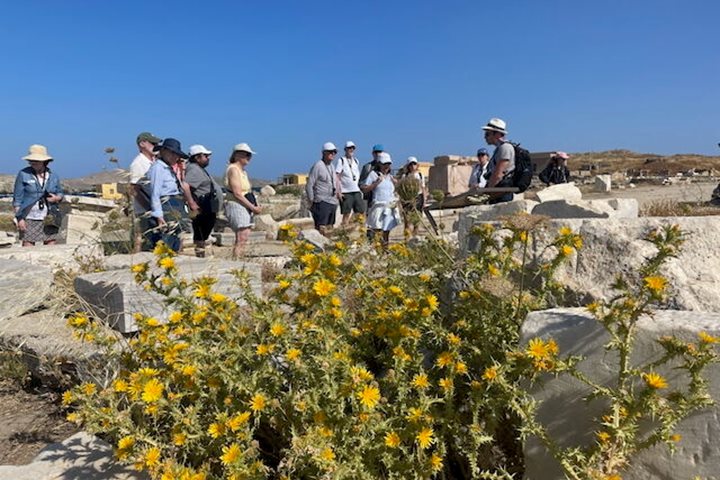The mighty Greek god Zeus put on a spectacular display of athletic prowess tossing his thunderbolts and lighting across the night sky, yet despite dire predictions of rainstorms, dawn brought sunny skies and relatively calm seas to our little corner of the Aegean.
Shortly after breakfast the captain ordered the crew aloft to loosen the sails in preparation for our morning’s sail. Tom O’Brien provided a “play by play”commentary from the spanker deck before having us all move forward to the forecastle to watch the foremast crew set the jibs. Every square inch of canvas was set and we sailed gently along the crystal clear deep aqua blue water of the Aegean at a respectable 2 knots—perfect conditions to take up our books and relax in our deck chairs as the cares of world passed us by.
The proximity of the Aegean islands to the mainland has meant that through the ages many have been occupied by more powerful coastal empires, all of which have left their mark on the culture and architecture of islands such as Tinos, the island that we visited this afternoon. Although the island was settled by the Ionia Greeks and was famous in antiquity for its Temple dedicated to Poseidon, it is perhaps the Venetians that left the most enduring impression on the island’s culture. The Venetians owned Tinos from the end of the Fourth Crusade in 1207 until the Ottoman Turks captured it in 1715. The Turkish presence on the island, however, was confined to a few officials and their tenure was short as Tinos joined in the Greek War of Independence in 1821. The Venetians brought with them the Latin religion and almost half the island is Catholic. Many of the houses that line the waterfront of the bustling harbor in Tinos Town have Venetian-inspired loggias and windows and one can find bell towers across the island (both Orthodox and Catholic). It is perhaps the ornate dovecotes however that are the most unique to the island.
Mother Nature generously endowed Tinos with an abundance of pale gray marble that is quarried in several parts of the island, but especially around the high mountain village of Pyrgos, which we visited after lunch to tour the new Museum of Marble craft. A new small, but comprehensive, gallery that illustrates every aspect of marble quarrying and craft production from architectural elements to delicate figurines. A short walk from the terrace of the museum took us past the local graveyard filled with decorative tombstones, and down into the central square. Although our arrival seemed to coincide with Greek Siesta news of our arrival spread like wildfire and soon several merchants reappeared to opened their shops.
There are more than 800 chapels and churches on the island and we ended the day with a visit to the Panayia Evangelistria, a rather grandiose Orthodox complex with a small chapel that houses amongst its impressive collection of silver lamps, a bejeweled icon of the Virgin Mary that a miraculously appeared to a local nun in 1822. The icon is venerated annually at an annual pilgrimage in August. All too soon it was time to head back to our wonder ship—after all, dinner beckoned.









